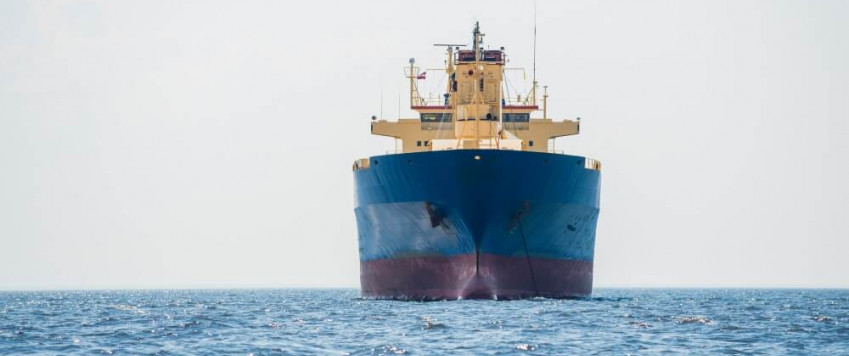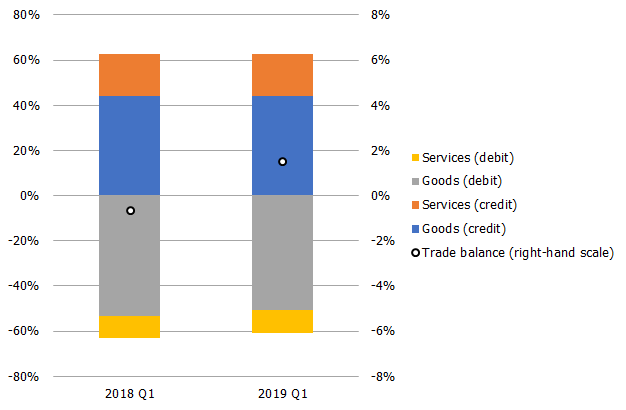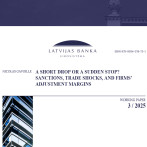The current account surplus stood at 4.2% of GDP in the first quarter

In the first quarter of 2019, the unexpectedly weak growth in imports of goods, in combination with more resilient than expected goods and services export growth, contributed to an unusual surplus in the trade balance and hence also the current account.
The current account surplus of the balance of payments amounted to 288.4 million euro or 4.2% of GDP in the first quarter of 2019.
In the first quarter of 2019, the unusually low deficit of the trade balance of goods (–6.7% of GDP) was on account of sustainable goods export growth (6.8%) and, compared to the trends observed in 2018, unexpectedly and particularly weak growth in imports of goods. Exports of wood remain the main contributors to export growth; however, the pace of growth is expected to decelerate due to lower export prices and weaker external demand. Following weak growth in the previous year and more notably in the last quarter of the year, agricultural products (grain in particular) posted a very steep 61.9% increase in March 20199; however, this was a result of one-off or short term factors (low base in March 2018), and the total export value was still around the level of March 2016 and 2017 because of the poor harvest last year. All commodity groups contributed to the weak growth of imports of goods in the first quarter of 2019. In March, however, growth was mainly dampened by the imports of mineral products, with imports of mineral fuel from Russia recording the most notable decline (–80.7% year-on-year).
With the growth in imports of services slightly outpacing that of exports, the balance typically remains in surplus (8.2%) in the first quarter of 2019. Despite the persisting negative trends in the financial services exports (–42.7% year-on-year), two-digit growth rates of information and communication technologies (ICT) and other business services supported the pace of growth recorded in the first quarter of 2019 (6.7% year-on-year). The export growth of transportation services is slowing down as expected, with that of transportation services by sea contracting and export growth of transportation services by rail moderating. However, the exports of transportation services by air having grown rapidly so far also experienced a decrease (–24.8%). The outlook for air transport remains positive overall, and this can be considered a one-off or short-term effect (the base was high in the first quarter of 2018). Similar trends can be observed for the services imports in the first quarter: the value of imports of financial services continues to decrease (–30%), the growth has been supported by the imports of ICT and other business services and, with the value of imports of rail transportation services decreasing, the growth rate of imports of transportation services has been declining.
The primary income and secondary income accounts have recorded surpluses (2.5 and 0.2% of GDP respectively), as is typical for the first quarter. As previously, the largest inflows relate to the absorption of the European Union (EU) funds and the subsidies for farmers, while Latvia's contributions and comparatively higher customs duties to the EU budget, suggesting more activity on Latvia's borders with Russia and Belarus (outside the EU), should be mentioned among outflows. The trend towards a rise in foreign dividend payments is no longer observed: in the first quarter of 2019, they were considerably lower than in the respective period of the previous year.
The amount of both assets and liabilities in the financial account grew in the first quarter. The increase in assets was supported by rises in short-term government deposits and deposits of monetary financial institutions (in contrast to the trend observed previously). The growth in assets was also affected by the trade credit growth and strengthening in the portfolio investment in the form of both debt securities and equities. At the same time, liabilities grew mostly on account of the issuance of the government debt securities.
Foreign direct investment reached 132 million euro (1.9% of GDP) in net terms in the first quarter of 2019. The largest inflows were registered from Estonia, Germany and Lithuania in sectors like real estate activities, trade and ICT.
Trade balance (% of GDP)

Textual error
«… …»






